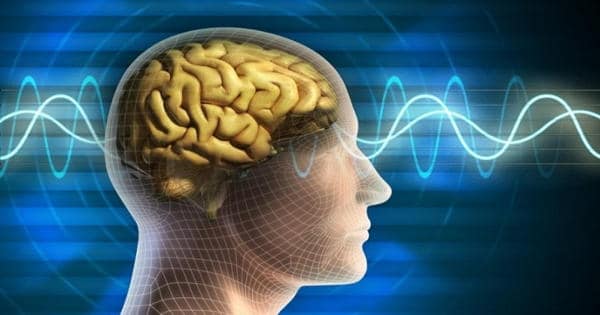A brain-like computing device capable of learning by association has been developed by researchers. Researchers at Northwestern University and the University of Hong Kong successfully conditioned their circuit to associate light with pressure, similar to how famed physiologist Ivan Pavlov conditioned dogs to associate a bell with food. The findings will appear in the journal Nature Communications.
The device’s secret lies in its novel organic, electrochemical “synaptic transistors,” which process and store information in the same way that the human brain does. The researchers demonstrated that the transistor can mimic the short-term and long-term plasticity of synapses in the human brain, allowing it to learn over time by building on memories.
The novel transistor and circuit, with its brain-like ability, could potentially overcome the limitations of traditional computing, such as their energy-sucking hardware and limited ability to perform multiple tasks at the same time. The brain-like device is also more fault tolerant, continuing to function normally even when some components fail.
New brain-like computing device simulates human learning. The researchers demonstrated that the transistor can mimic the short-term and long-term plasticity of synapses in the human brain, building on memories to learn over time.
“Although the modern computer is excellent, the human brain can easily outperform it in some complex and unstructured tasks, such as pattern recognition, motor control, and multisensory integration,” said Jonathan Rivnay, a senior author of the study at Northwestern. “This is due to the synapse’s plasticity, which is the fundamental building block of the brain’s computational power. These synapses allow the brain to operate in a highly parallel, fault-tolerant, and energy-efficient fashion. In this paper, we show how an organic, plastic transistor can mimic key functions of a biological synapse.”
Rivnay is a biomedical engineering assistant professor at Northwestern’s McCormick School of Engineering. Paddy Chan, an associate professor of mechanical engineering at the University of Hong Kong, and he co-led the study. The paper’s first author is Xudong Ji, a postdoctoral researcher in Rivnay’s group.

Problems with conventional computing
Because traditional digital computing systems have separate processing and storage units, data-intensive tasks consume a lot of energy. In recent years, researchers have sought to develop computers that operate more like the human brain, with arrays of devices that function like a network of neurons, inspired by the combined computing and storage process in the human brain.
“Memory and logic are physically separated in our current computer systems,” Ji explained. “You carry out computation and send the results to a memory unit.” Then, each time you want to access that information, you must recall it. If we can bring those two separate functions together, we can save space and save on energy costs.”
By connecting single synaptic transistors into a neuromorphic circuit, researchers demonstrated that their device could simulate associative learning.
Currently, the memory resistor, or “memristor,” is the most developed technology capable of performing combined processing and memory functions; however, memristors have energy-intensive switching and are less biocompatible. These disadvantages drew researchers to the synaptic transistor, particularly the organic electrochemical synaptic transistor, which operates at low voltages, has continuously tunable memory, and is highly compatible with biological applications. There are still difficulties.
“Even high-performance organic electrochemical synaptic transistors require that the write operation be decoupled from the read operation,” Rivnay explained. “If you want to keep a memory, you must disconnect it from the writing process, which complicates integration into circuits or systems.”
How the synaptic transistor works
To overcome these obstacles, the Northwestern and Hong Kong teams optimized a conductive, plastic material within an organic, electrochemical transistor that can trap ions. A synapse is a structure in the brain that allows a neuron to send signals to another neuron via small molecules known as neurotransmitters. Ions behave similarly to neurotransmitters in the synaptic transistor, sending signals between terminals to form an artificial synapse. The transistor remembers previous activities by retaining stored data from trapped ions, resulting in long-term plasticity.
The synaptic behavior of their device was demonstrated by connecting single synaptic transistors into a neuromorphic circuit to simulate associative learning. The integrated pressure and light sensors into the circuit and trained it to recognize the two unrelated physical inputs (pressure and light).
Pavlov’s dog, which naturally drooled when it encountered food, is perhaps the most famous example of associative learning. After conditioning the dog to associate a bell ring with food, the dog began drooling whenever it heard a bell ring. The neuromorphic circuit was activated by the researchers applying pressure with a finger press. To condition the circuit to associate light with pressure, the researchers used pulsed light from an LED lightbulb followed by pressure. The pressure is the food in this scenario, and the light is the bell. Both inputs were detected by the device’s corresponding sensors.
The circuit established an initial connection between light and pressure after one training cycle. The circuit significantly associated light with pressure after five training cycles. Light alone was capable of eliciting a signal, also known as an “unconditioned response.”
Future applications
Because the synaptic circuit is made of soft polymers, similar to plastic, it can be easily fabricated on flexible sheets and easily integrated into soft, wearable electronics, smart robotics, and implantable devices that directly interface with living tissue, including the brain.
“While our application is just a proof of concept, our proposed circuit can be expanded to include more sensory inputs and integrated with other electronics to enable on-site, low-power computation,” Rivnay said. “Because it is biologically compatible, the device can directly interface with living tissue, which is critical for next-generation bioelectronics.”













